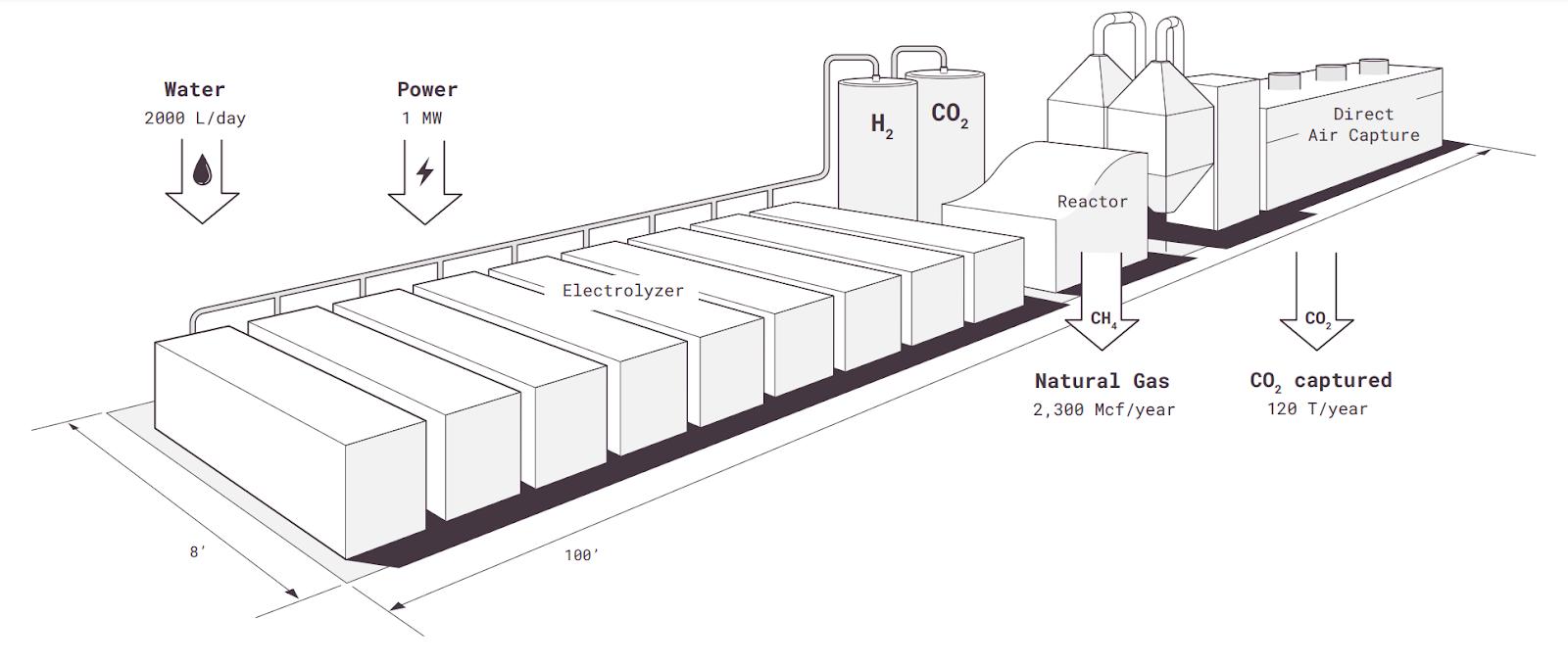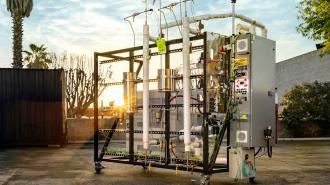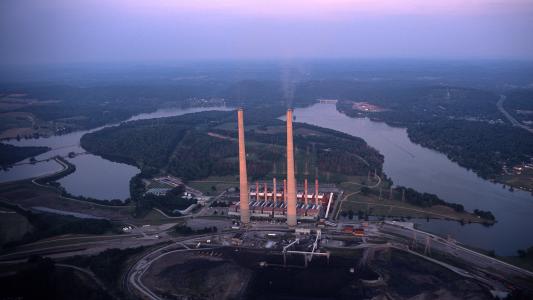A California startup is using sunlight, water, and air to create synthetic natural gas — eliminating the need to pull it from the ground and release additional greenhouse gasses into the atmosphere.
Synthetic natural gas: Natural gas releases CO2 when burned, and its primary component, methane, is a highly potent greenhouse gas in its own right.
Synthetic natural gas could reduce the release of harmful methane emissions.
Methane emissions from the energy sector are often traced to leaks from wells and pipelines, but a few groups are looking for ways to create natural gas, rather than pulling it from the ground, using renewable energy and elements pulled from the air and water.
While this synthetic natural gas, or “e-methane,” would release carbon into the air when burned, just like standard natural gas, it could reduce the release of harmful methane emissions as the world transitions to truly clean power sources.
What’s new? A new California-based startup, Terraform Industries, has now announced that its system to create synthetic natural gas, called the Terraformer, has officially produced “pipeline-grade” gas for the first time — from solar power, water, and air.
The Terraformer consists of three subsystems.
One is an electrolyzer powered by solar energy — this machine splits H2O into oxygen and hydrogen. The second is a direct air capture (DAC) system that extracts CO2 from ambient air, and the third is a chemical reactor that combines hydrogen and CO2 to create synthetic natural gas.

Individually, none of these systems is groundbreaking — electrolyzers, for example, were invented more than 200 years ago — but Terraform claims it has improved on each with proprietary tech that drives down costs.
Terraform’s synthetic natural gas is still much more expensive than the regular kind, but the startup told Techcrunch it has already identified ways to lower costs further. Ultimately, though, it’ll need to scale up to the point that it’s producing thousands of Terraformers, and enormous quantities of synthetic natural gas, every year to make a difference.
The big picture: Terraform is far from the only company trying to synthesize natural gas and other “hydrocarbon” fuels, like gasoline and jet fuel. If it could be done at low cost and at scale, it would provide a way to turn clean electricity into high energy density fuel that could be burned on demand, without extracting fossil fuels.
Europe, Canada, Japan, the US, and many other places already have synthetic natural gas projects launched or in the pipeline, and eight large international companies recently formed a coalition dedicated to the development of e-methane projects across the globe.
Will synthetic natural gas ever be cheap enough to truly compete with today’s natural gas?
It’s not clear whether pursuing synthetic natural gas is a worthwhile move in the fight against climate change, though.
Some question whether it’ll ever be cheap enough to truly compete with today’s natural gas, and even if it can, it means pulling CO2 out of the atmosphere only to release it again when we burn the e-methane — experts say we need to remove and store a lot of atmospheric CO2 to meet our climate goals.
“[Synthetic natural gas] is a terrible idea, full stop,” Rebecca Dell, director of the industry program at the nonprofit ClimateWorks, told the Financial Times.
The bottom line: Whether we ultimately need e-methane or can make do with batteries or biofuels, Terraform seems to be doing something right in the engineering department, and the tech it’s developing could be useful for more than just making natural gas.
CEO Casey Handmer told TechCrunch that Terraform’s electrolyzer produces hydrogen at a cost of $2.50 per kilogram of H2, a potentially big advance compared to $5-11 per kg for existing green hydrogen systems.
The company’s goal is to get the cost down to $1 per kg, which would make its hydrogen cheap enough to compete with fossil fuels for electricity generation — and when we burn hydrogen, as opposed to hydrocarbons, the only byproducts are warm air and water.
Terraform also claims its DAC system extracts CO2 from the air at a cost of $250 per ton. That’s still short of the industry goal — less than $100 per ton — but it puts Terraform well ahead of other systems, which generally cost $600-1000 per ton.
If it can get the cost of that down, too, its DAC technology could be used independently to capture CO2 that is then sequestered underground, or sold to companies that make products that require carbon, such as concrete.
“If you can figure out some way to make more money than you use, then you are inside the tent of capitalism.”
Casey Handmer
Right now, though, Terraform’s best shot at turning a profit is with the Terraformer, and it says it is already taking reservations for the system and ramping up production.
“A lot of these cool technologies to address the climate problem are fundamentally not within the realm of capitalism because they don’t make money — they actually consume more money than they make,” Handmer told TechCrunch.
“That makes it really, really hard to scale them,” he continued. “But if you can figure out some way to make more money than you use, then you are inside the tent of capitalism. That is just a system to which money naturally flows. That’s the critical thing to do.”
We’d love to hear from you! If you have a comment about this article or if you have a tip for a future Freethink story, please email us at [email protected].






